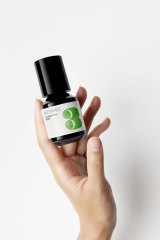But which sunscreen to use? And when exactly in your morning skincare routine should you apply it?
Sunscreen should be the last layer of skincare a person applies, says Gunatheesan – so after serums and moisturiser, but before any make-up.
Top sunscreens according to need
For rosacea and other sensitive skin conditions: endota Natural Zinc SPF50+ (RRP $30)
For all skin tones: Rationale #3 Tinted Serum SPF50+ (RRP $172)
For acne-prone skin: La Roche-Posay Anthelios Invisible Fluid Facial Sunscreen SPF50+ (RRP $31.95)
For reapplication over make-up: Colorscience Sunforgettable Brush-On Shield SPF50 (RRP $99)
Budget pick: Bioderma Photoderm Nude Touch SPF50+ ($26)
Source: Dr Shyamalar Gunatheesan
For people with sensitive skin conditions of any kind (common ones include rosacea, psoriasis, eczema or any other impaired skin barrier) Gunatheesan recommends physical sunscreens over chemical sunscreens.
“More and more research is showing that zinc is probably the safest sun protecting agent for UVA and UVB [rays],” she says, noting one of the most popular physical sunscreen ingredients. “Because it’s soothing. You think about it, you use it in nappy balm for your kids’ dermatitis. It’s anti-inflammatory.” And many new zinc formulations like Rationale’s #3 Tinted Serum also avoid leaving a dreaded white cast on skin, she adds, making them particularly suitable for people with darker skin tones.

Rationale’s #3 Tinted Serum SPF50+
The other key physical sunscreen ingredient to look out for is titanium dioxide. Both that and zinc work by reflecting the sun’s rays immediately after application.
Chemical sunscreens, which contain ingredients like avobenzone, octocrylene and benzophenone, absorb UVA and UVB rays and cause a chemical reaction in a person’s skin to break them down. These sunscreens take 20 minutes, after application, to be effective.
For many people, chemical sunscreens, which are just as effective as physical sunscreens, don’t cause any adverse reaction. “But this [chemical reaction] releases heat, [which] can be worse for sensitive skin or rosacea patients,” Gunatheesan says.
People using any sunscreen, she adds, should still check the ingredients in their tube and undergo a patch test for three consecutive days on their forearm to see how they react, because formulas can feature nut oils or other ingredients that frequently cause skin sensitivity.
Loading
But most importantly, people need to find a sunscreen that they enjoy the feel of on their skin, Gunatheesan says. “If it’s going to prevent skin cancer, the best sunscreen is the one that you’re going to use.”
Make the most of your health, relationships, fitness and nutrition with our Live Well newsletter. Get it in your inbox every Monday.
Stay connected with us on social media platform for instant update click here to join our Twitter, & Facebook
We are now on Telegram. Click here to join our channel (@TechiUpdate) and stay updated with the latest Technology headlines.
For all the latest Life Style News Click Here
For the latest news and updates, follow us on Google News.
